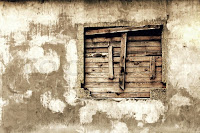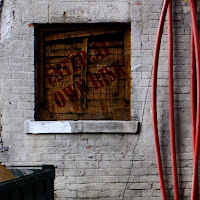20/10/2015
Charlotte Bethany Henderson
100359031
Since the 9th of October we have been working on modelling and texturing a low poly spellbook, using both Maya and Photoshop.
I started off by modelling a relatively simple spellbook in Maya, making the shape curved and distorted to give the idea of it being an old, well used book. I also added a single clasp to hold the covers shut. I also did the uv mapping for the model and laid them out in a way that made the most of the uv space we had to use, making the cover larger that the rest of the pieces as this was the area that would have the most detail.


After ensuring that there were no issues with the model, I began to develop the texture for the spellbook, using the uv map put into photoshop as a guide.
I began blocking in solid colours for areas like the cover, finding suitable images that I could manipulate from Google, like leather textures and metal textures. Even if the basic image may not have been usable directly from Google, some could be cropped and rotated etc to fit into what they were needed for.
The first layer consisted a leather background for the cover of the book, which I had begun to create a worn look for using other leather images that I used the skills we learned in the photo manipulation section to merge into the base texture. I also added in a texture for the pages, by taking a section from an image that was found on Google and altering it to fit the section, by cropping it, then duplicating that area several times.

I then began looking at the clasps, and what I wanted them to be made from. I obviously knew that I wanted them to have a worn metal look, but which metal? I started off by looking at coppers, because I felt like it would match the overall colour scheme of the book so far, but once I had tested this on the model I decided that the copper texture both looked too polished to be on a worn clasp of an old book, and almost matched too well with the other colours in the texture so didn't stand out from the cover enough.
After this I decided to go for a dark Iron colour for the clasp, and used several images from the internet manipulated together, as well as several colour layers in Photoshop to create a colour and texture that I was happy with. I had to bear in mind that the outside of the clasp would have been worn differently to the inside and apply materials accordingly. I decided that due to weathering the outside would probably be more rusted and dented than the inside, which would probably be quite smoothed down from the cover and pages rubbing on it over the years.
After I had all the areas blocked out in their general textures, I started to add finer details, such as type and designs on the cover, and locks etc on the clasp and adding more shadow to the pages where the cover would cast them.
Here I added detail to the spine where the Authors name and the title of the book would go, using the Marquee tool to select the area that I wanted to be enclosed and using the 'Stroke' tool to create the square box around the edge. This was then bevel embossed to create the look of it being printed onto the cover. This technique was used with all of the details on the cover as otherwise they look quite obviously overlayed which is not what I wanted.
I then began to add details such as patterns and text onto the cover to make it look like an ancient spellbook, in this layer I also added a lock to the clasp, as this actually gave the clasp a more relevant use to the book, rather than just having it as decoration.
This was quite an important layer as all these details are really what start to bring the book to life, making it look real, like something you would find in a Wizards Castle etc, otherwise it could just be any old book.
In the next layer I began to add more lighting to the book, adding shadows around the edges on the book cover where it would found around the book, and also on the areas of the pages that would be overshadowed by the lip of the cover.
I also added corner pieces to the cover in a similar shade of grey to the metal that I used for the clasp and text. The detailed part of the clasp I took from an image on Google, and then added parts using the Marquee tool to give the idea of it folding around the edge of the book.

After this I simply added some more details to the cover, adding some corner details using the bevel emboss tool and images off Google, due to when I applied this texture to the model I felt like the back of the cover had a lot of blank space on it, that made it look poorly thought out. Also I added details to the clasp, as in the image on the left it looks as though the clasp is made out of one solid piece of metal, which makes no sense as to how it would work, so I added a hinge to the bottom of the clasp, as well as some rivets for how the clasp is fastened to the book. This was done using the Marquee tool and the bevel emboss effect.
I also created a bump map for this texture to apply to the book, which creates a more realistic look to the texture, making the dark areas look like indents and the lighter areas as raised sections.






























